We’re all home for the holidays. Looking around the living room at my parents and siblings, I notice that most of them are clicking on their laptops, two are also wearing headphones, one is pecking away at her smartphone. The television is on, but no one’s watching it. Each of us is engrossed in his or her own solipsistic experience, be it a game, a TV show, or some social medium.
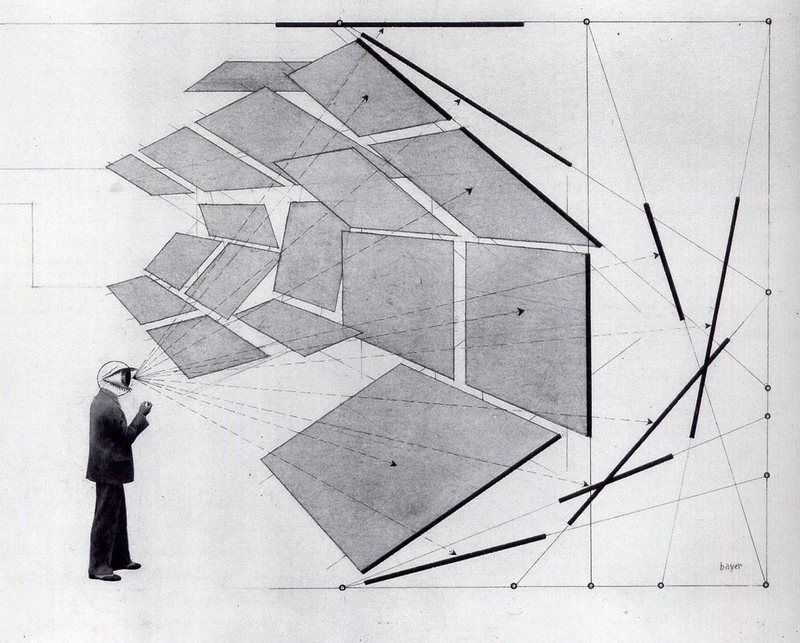
I started teaching college as a graduate student in 2002. In the relatively short time since, I have watched as various devices infiltrated the classroom: from no computers or phones, to special rooms with computers called “smart rooms,” and finally to every classroom fully equipped with computers and screens and every student with their own laptop, tablet, phone, and other various gadgets. “Computers aren’t the thing,” says tech executive Joe MacMillan (played by Lee Pace) in the TV show Halt and Catch Fire. “They’re the thing that gets us to the thing.” Well, if that’s the case, we have failed to get to the thing in the classroom.
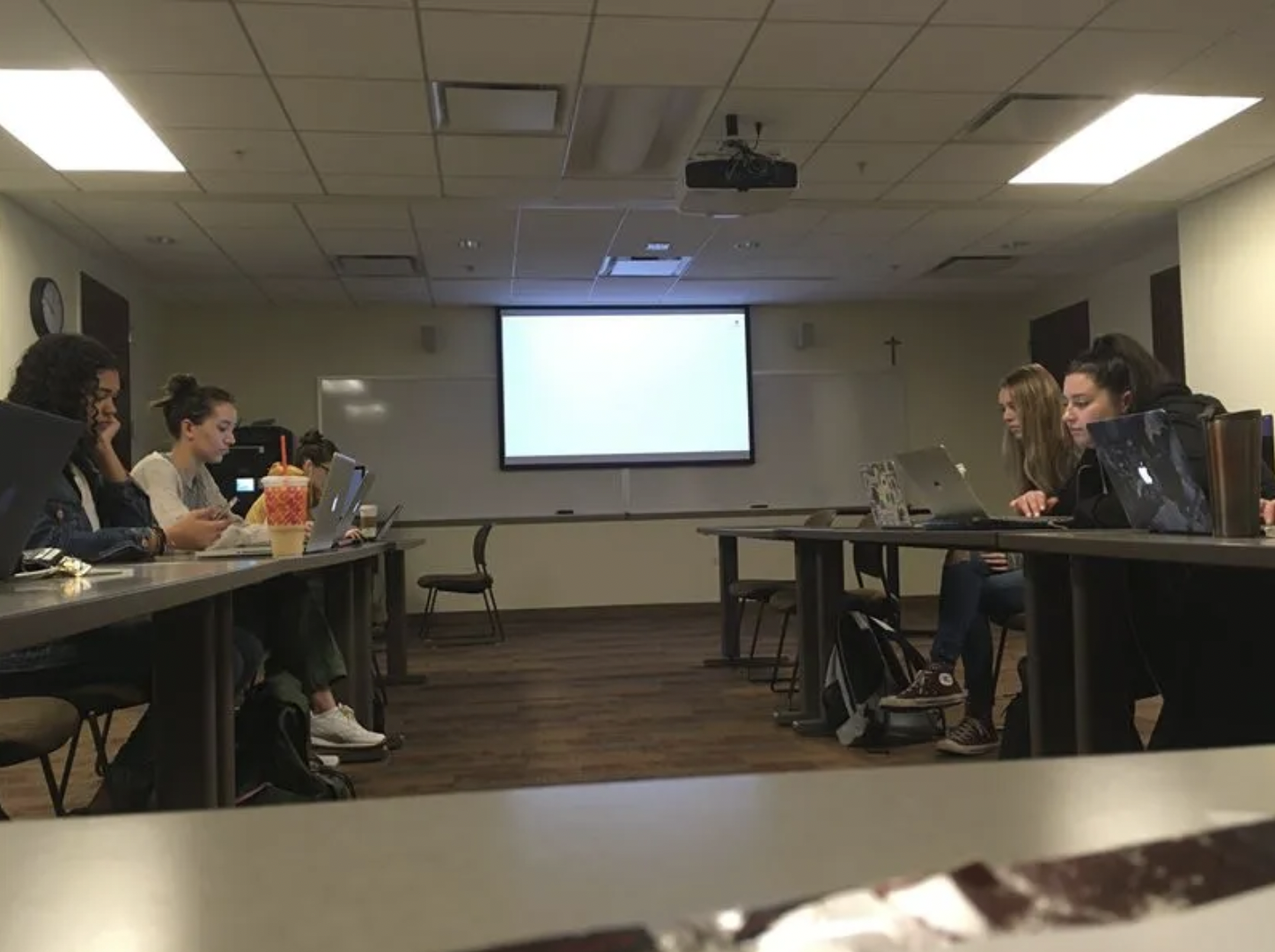
We gather around some screens and use others individually. Large flat-screen displays connected to projectors serve the former purpose, whereas laptops, tablets, and phones serve the latter. But affordances are not merely infrastructural. They are also behavioral. That is, just because technologies are capable of many things doesn’t mean we use them for all of those things. Moreover, we often use them for purposes for which they were never intended. Many affordances emerge from use.
In our evolution from television screens to computer screens and to mobile screens, we’ve fundamentally changed the infrastructure by which ideas spread. We gather together around big screens to watch passively while, paradoxically, we engage as individuals with smaller screens to connect with each other. Screens at the large scale (e.g., theatre, television, etc.) turn us into nomads, hunting and gathering in groups for news, information, and entertainment. Smaller screens turn us into monads, experiencing media individually or together in accompanied solitude. Feeling disconnected from the world we’ve created is a natural response to the fracturing of mediated experiences. Listening to music, for example, once shared together is now stowed away in portable black boxes, while others are delivered to one another via invisibly connected screens.
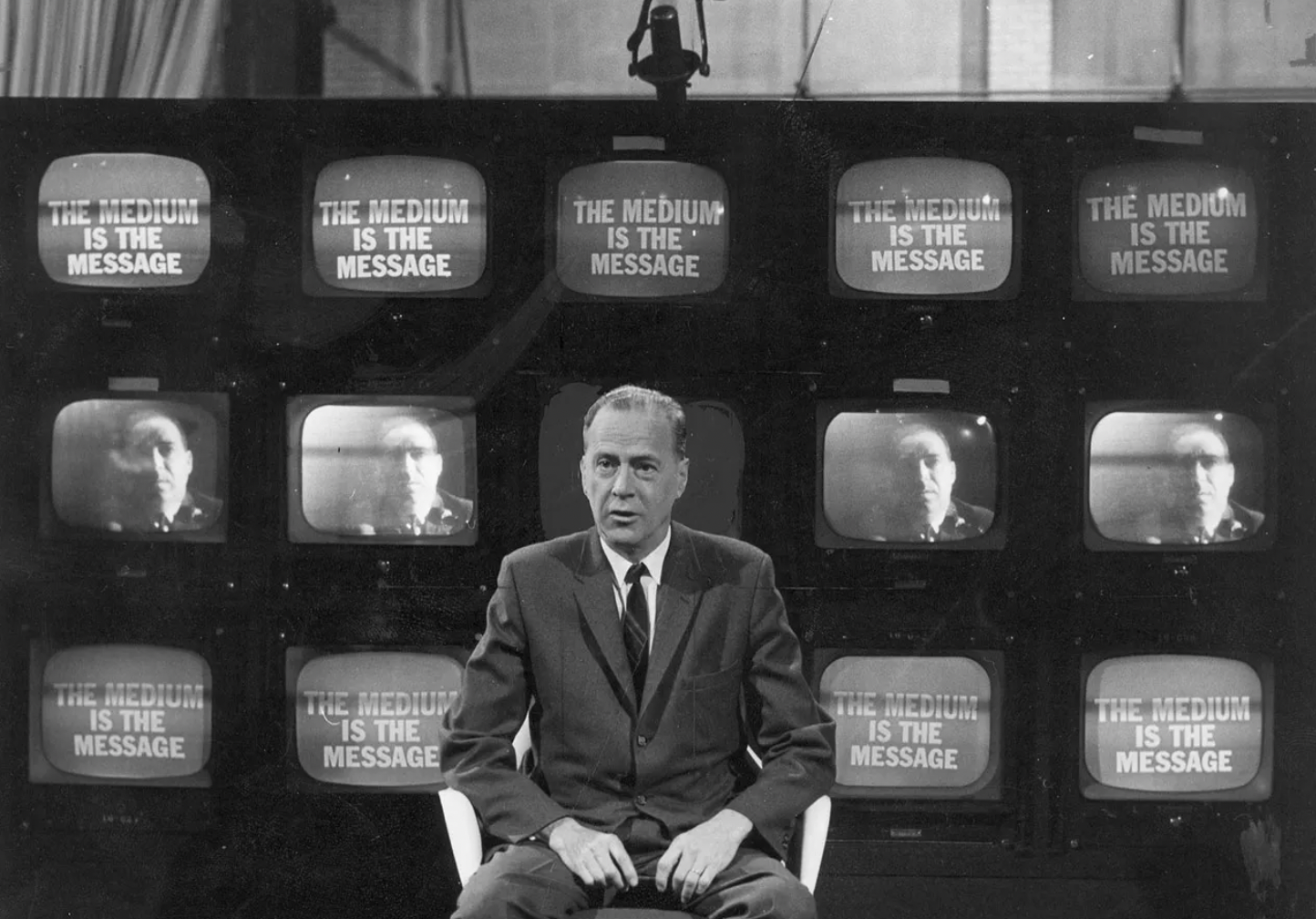
The disconnections inherent in our slicing up the world with media operate at different scales and via different channels. Writing before these technologies found their way into our pockets, Marshall McLuhan postulated his “electronic-age” nomads: “Man [sic] the food-gatherer reappears incongruously as information gatherer. In this role, electronic man [sic] is no less a nomad than his Paleolithic ancestors.” Our media networks have since gone global while their attendant media devices have gone mobile. Screens of different sizes and mobility shape our world in distinct ways. That is not to say that one can’t go to the theatre or watch television alone, but the design of these media lends them to sharing, whereas the mobile screen is intended for the individual. That is the price of the monad.
With screens that bring the world inside the walls of the home, the dam between the public and the private was broken. Making sense of the distinction when it comes to the mobile screen is a problem. The telephone, once considered a private matter between two callers, is now often shared in public spaces, or tapped, recorded, and stored for later scrutiny. Like the television or theatre, it can be used in groups, as the boardroom conference call illustrates, but it tends toward solitary use, even if that use often takes place in public places. The telephone, as it has become mobile, has succumbed to the screen, so much so that a phone without a screen is already an antiquated concept. The window to the web and to the world that was once in the domain of the living room converged with every other media form on the computer desktop and is now in pockets and bags dispersed throughout the human world. Given their ubiquity, it isn’t difficult to see the media as an environment: it’s all around us.
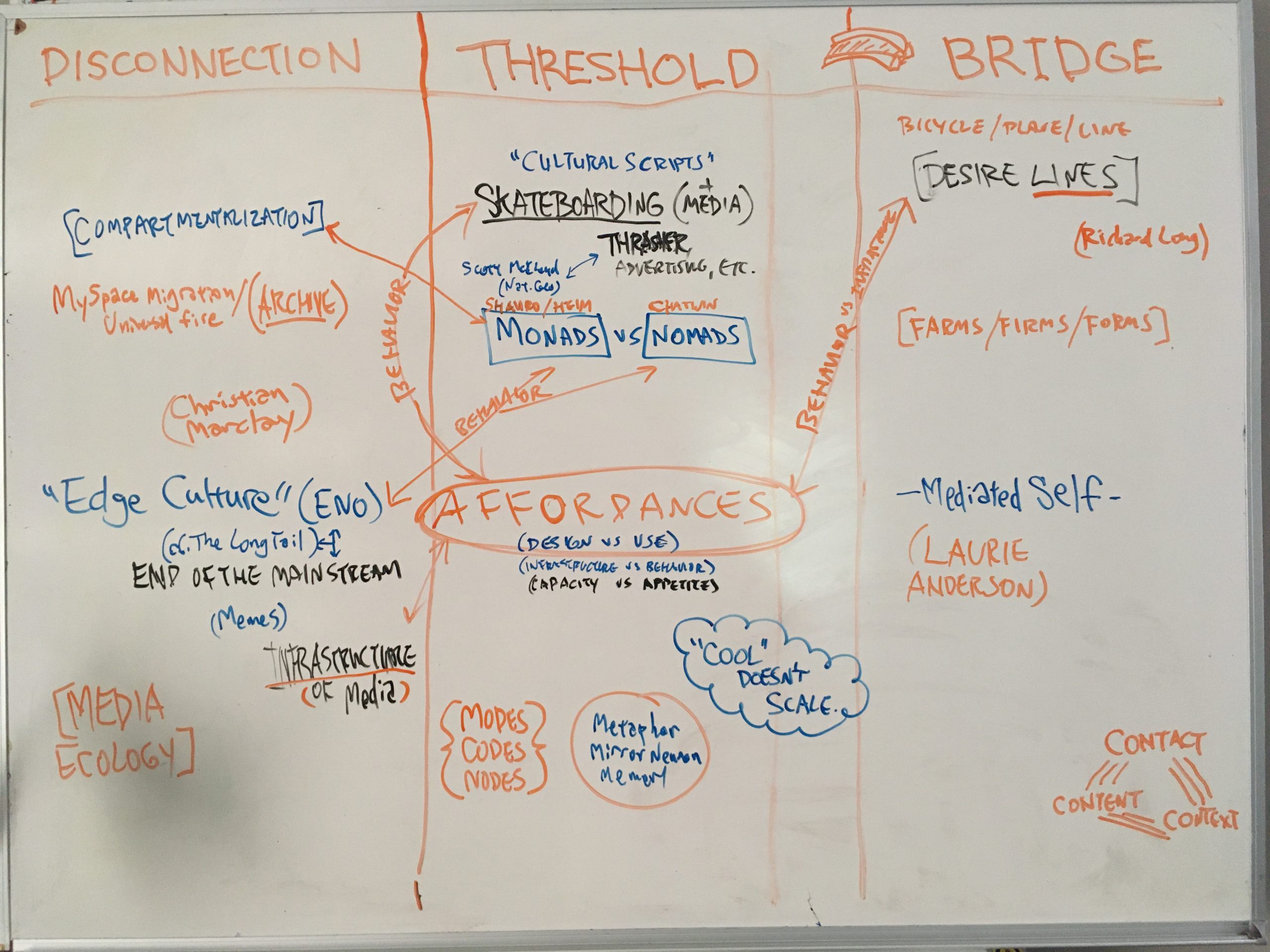
In the last 100 years, there have been two major shifts in media technology: the separation of communication from transportation, starting with the telegraph and continuing via radio and other broadcast media, and on to the telephone and the internet, and the move of representation from the page and the stage to the screen. Both of these shifts—the invisibility of networks and the ubiquity of screens—culminated in the rapid spread of television.
Between 1948 and 1955, television invaded almost two-thirds of American homes. In less than a decade, TV became the nexus of media presence and personal life. As powerful as printed language continues to be, it isn’t the only way we understand the world. The computer did not usher in the information age. The transition from page to screen has been privileged by those who study these changes, but the shift to broadcast media was also prefigured by the lecture circuit and stage-plays. McLuhan was fond of saying that the user of media was its content. Predating McLuhan, the Russian filmmaker and theorist Sergei Eisenstein wrote, “The spectator himself [sic] constitutes the basic material of the theatre.” We are as easily lost in words on the page and drama on the stage.
In his Confessions, St. Augustine lamented straying into fantasy, writing,
Stage-plays… carried me away, full of images of my miseries, and of fuel to my fire. Why is it, that man desires to be made sad, beholding doleful and tragical things, which yet himself would by no means suffer? yet he desires as a spectator to feel sorrow at them, and this very sorrow is his pleasure. What is this but a miserable madness? for a man is more affected with these actions, the less free he is from such affections.
St. Augustine’s confessions of losing himself in plays are all too familiar to us. Michel de Certeau wrote in 1984, “Our society has become a recited society, in three senses: it is defined by stories (récits, the fables constituted by our advertising and informational media), by citations of stories, and by the interminable recitation of stories,” his emphases. St. Augustine continues, again describing viewing stage-plays:
What marvel that an unhappy sheep, straying from Thy Flock, and impatient of Thy keeping, I became infected with a foul disease? And hence the love of griefs; not such as should sink deep into me; for I loved not to suffer, what I loved to look on; but such as upon hearing their fictions should lightly scratch the surface; upon which, as on envenomed nails, followed inflamed swelling, impostumes, and a putrified sore. My life being such, was it life, O my God?
The connection St. Augustine feels with the histrionics of the stage is also a disconnection from his everyday life, and more importantly for him, with God. This disconnection is the same one we feel through movies, television shows, and video games.

In his 1996 memoir, A Year with Swollen Appendices, Brian Eno proposes the idea of edge culture, which is based on the premise that
If you abandon the idea that culture has a single centre, and imagine that there is instead a network of active nodes, which may or may not be included in a particular journey across the field, you also abandon the idea that those nodes have absolute value. Their value changes according to which story they’re included in, and how prominently.
My friend Mark Wieman noted recently that the long tail, the internet-enabled power law that allows for millions of products to be sold regardless of shelf space, has gotten so long and so thick that there’s not much left in the big head. As the online market supports a wider and wider variety of cultural artifacts with less and less depth of interest, the big, blockbuster hits have had ever-smaller audiences. Eno’s edge culture is based on Joel Garreau’s idea of edge cities, which states that the center of urban life has drifted out of the square and to the edges of town. The lengthening and thickening of the long tail plot our media culture as it moves from the shared center to the individuals on the edges.
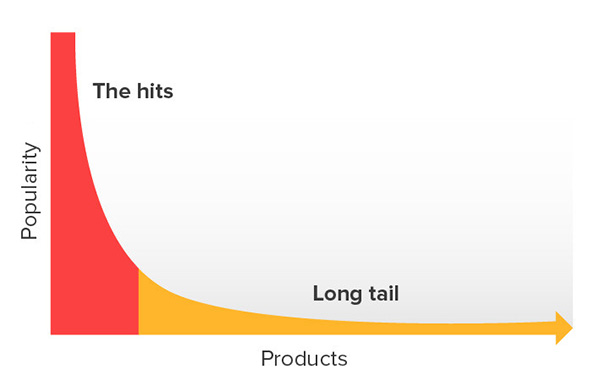
I’ve encountered this demographic splintering more and more in the classroom as I try to pick universal media artifacts to use as examples. Increasingly, even the biggest shows and movies I bring up leave most of my students out, and whenever I get into the stuff I actually like, I’m greeted with the sound of crickets.
“The Media,” which once carried the prefix “Mass,” has trickled down from a one-to-many broadcast model to more of a one-to-one, individualized state, from the center to the edges. The long tail used to describe the splintering of artifacts and attention, from blockbuster hits for all, to niche interests for each. Now it also describes the apparatuses via which we consume those artifacts, the gadgets that hold our attention. With the further individualization of our media and the adoption of personal media devices, the postmodern promise of individual viewpoints and infinite fragmentation is upon us. As the screens get smaller, so does the number of media experiences we share.
The medium is only the message at a certain scale, and that scale is diminished.
This fragmentation and its diminishing scale were never more evident than during the November 2016 presidential election. None of the old tools could provide a picture of what was going on. “It was the last time we could trust the mass media as a reliable shared narrative,” declares Chris Riley in his 2017 book, After the Mass-Age. Think about news media. As network news splintered into 24-hour cable coverage, so did its audience and its intentions. Riley writes that instead of trying to get the majority to watch, each network preferred a dedicated minority. “Now you didn’t win the ratings war by being objective; you won by being subjective, by segmenting the audience, not uniting them.” And we met them in the middle, seeking out the news that presented the world more the way we wanted to see it rather than the way it really was. “Analog media such as radio and television were continuous, like the sound on a vinyl record,” Douglas Rushkoff writes. “Digital media, by contrast, are made up of many discrete samples. Likewise, digital networks break up our messages into tiny packets and reassemble them on the other end. Computer programs all boil down to a series of 1s and 0s, on or off. This logic trickles up to the platforms and apps we use.” With the further splintering of social media, we choose the news that fits us best. If we’re all watching broadcast network news, we’re all seeing the same story. If we’re all on the same social network, no two of us are seeing the same thing. The limited access to content via broadcast media used to unite us. Now we’re only loosely united via the platform.
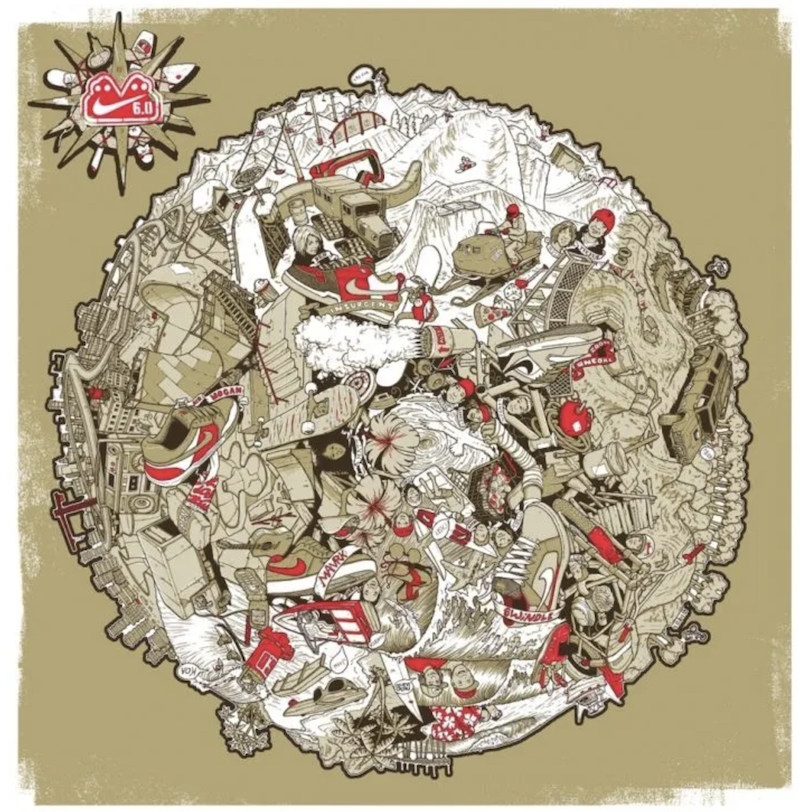
In the 1990s, action-sport events like the X-Games and Gravity Games and short-lived websites like Hardcloud.com and Pie.com tried to gather long-tail markets that were too small by themselves into viable mass markets, like a sort of cultural junk bond. It happened with the many musical subgenres of the time. What was the label “alternative” if not a feeble attempt at garnering enough support for separate markets under one tenuous banner? If you can get the kids and their parents invested, you might have a real hit. Then in the 2000s, sub-brands like Nike 6.0 tried again. The “6.0” suffix referred to six domains of extreme sports: BMX, skateboarding, snowboarding, wakeboarding, surfing, and motocross. Whatever the practitioners of such sports might share in attitudes or footwear, they don’t normally share in an affinity for each other. Like the individualized media mentioned above, we remain in our silos, refusing to cross-pollinate in any way.
Even the metaphor of the mainstream is outmoded. It implies groundwater, springs, wells, tributaries, all connected and flowing. There’s a concept in hip-hop regarding your place in the culture that better suits the current state of media at large. To avoid conflict in hip-hop, one creates and stays in their own lane. No merging, no switching, everyone runs parallel. Our larger media culture is much more like a multi-lane highway now than it is a flowing stream of any sort. Everyone—creator and consumer—finds their lane and stays in it, ever enabled by mobile devices with networked screens.
Whether we view ourselves in nomadic groups or as monadic individuals, our experiences collect on the screen like so much data condensation. Michael Heim describes the threshold this way:
Realities are representations continually placed in front of the viewing apparatus of the monad, but placed in such a way that the system interprets or represents what is being pictured. The monad sees the pictures of things and knows only what can be pictured. The monad knows through the interface. The interface represents things, simulates them, and preserves them in a format that the monad can manipulate in any number of ways. The monad keeps the presence of things on tap, as it were, making them instantly available and disposable, so that the presence of things is represented or “canned.”
The surrogate experiences of monads and nomads make up the diverse disconnections implemented by our use of technologies. Large or small, screens deal in illusions, and as porous as they seem, interfaces are still just surfaces.
Bibliography:
Anderson, Chris. (2006). The Long Tail. New York: Hyperion.
Saint Augustine. (1961). Confessions. New York: Penguin.
Carey, James. (1989). Communications as Culture. New York: Routledge.
de Certeau, Michel. (1984). The Practice of Everyday Life. Berkeley, CA: University of California Press.
Eno, Brian. (1996). A Year with Swollen Appendices. London: faber & faber.
Heim, Michael R. (1993). The Metaphysics of Virtual Reality. Oxford: Oxford University Press.
Kleberg, Lars. (1993). Theatre as Action: Soviet Russian Avant-Garde Aesthetics. New York: New York University Press.
McLuhan, Marshall. (1964). Understanding Media: The Extensions of Man. New York: McGraw-Hill.
Riley, Chris. (2017). After the Mass-Age. Portland, OR: Analog.
Rushkoff, Douglas. (2019). Team Human. New York: W.W. Norton.
Watkins, S. Craig. (2009). The Young and the Digital. New York: Beacon Press.
